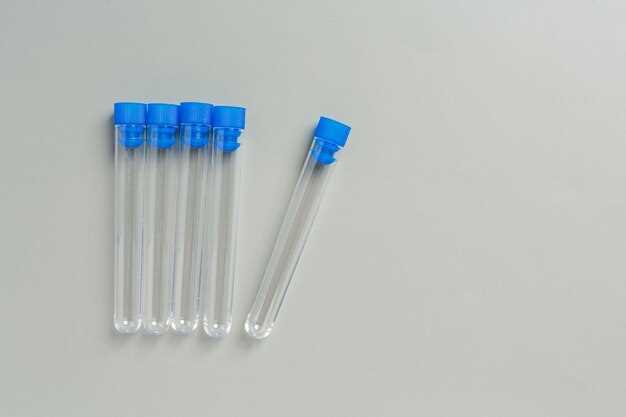
Omeprazole per peg tube is a convenient and effective way to administer omeprazole medication to patients who have a percutaneous endoscopic gastrostomy (PEG) tube in place. This specially formulated omeprazole solution is designed for easy and safe administration through the PEG tube, providing relief from acid reflux, heartburn, and other gastroesophageal reflux disease (GERD) symptoms.
With Omeprazole per peg tube, patients can experience the benefits of omeprazole therapy without the need for swallowing pills or capsules. The solution is easily delivered through the PEG tube, ensuring accurate dosing and consistent treatment for gastrointestinal conditions.
About Omeprazole per Peg Tube
Omeprazole is a proton pump inhibitor that is commonly used to treat conditions related to excessive stomach acid production, such as acid reflux, ulcers, and gastroesophageal reflux disease (GERD). When administered via a peg tube, omeprazole helps to reduce the production of stomach acid, promoting healing and providing relief from symptoms associated with these conditions.
This medication is highly effective in managing symptoms such as heartburn, chest pain, and regurgitation that can be disruptive and uncomfortable. By inhibiting the proton pumps in the stomach lining, omeprazole works to decrease the amount of acid produced, allowing the esophagus and stomach to heal and function properly.
Omeprazole is a safe and reliable option for individuals who require long-term management of acid-related conditions. Its efficacy and tolerability make it a popular choice among healthcare providers and patients alike.
Key Benefits of Omeprazole
Omeprazole administered via Peg Tube offers several key benefits:
1. Effective Acid Suppression: Omeprazole is a proton pump inhibitor that efficiently reduces gastric acid secretion, providing relief from acid-related conditions.
2. Improved Gastric Healing: Omeprazole aids in the healing of gastric ulcers and erosive esophagitis, promoting faster recovery and symptom relief.
3. Prevention of Recurrent Ulcers: By inhibiting acid production, omeprazole helps prevent the recurrence of peptic ulcers, supporting long-term ulcer management.
4. Symptom Alleviation: Patients experience relief from symptoms such as heartburn, acid reflux, and indigestion, enhancing their overall quality of life.
5. Easy Administration: Omeprazole can be conveniently administered via Peg Tube, ensuring accurate dosing and consistent delivery for optimal therapeutic effects.
How to Administer Omeprazole via Peg Tube
Administering Omeprazole via a PEG tube requires careful attention to detail to ensure the medication is delivered properly and effectively.
Step 1: Gather Necessary Supplies

Before administering Omeprazole, make sure you have the medication, a syringe, and water for flushing the tube.
Step 2: Prepare the Omeprazole
Crush the Omeprazole tablet into a fine powder and mix it with a small amount of water to create a suspension.
Important: Do not crush or break delayed-release capsules as this can reduce their effectiveness.
Step 3: Administer the Medication

Using a syringe, slowly push the Omeprazole suspension into the PEG tube while ensuring proper positioning and adequate flushing with water to prevent clogging.
Note: Follow any additional instructions from your healthcare provider on the timing and frequency of Omeprazole administration.
Best Practices for Administration
1. Follow Doctor’s Instructions: Always administer Omeprazole per Peg Tube as directed by your healthcare provider. Do not deviate from the prescribed dosage unless otherwise instructed.
2. Use Proper Technique: Ensure that the Peg Tube is properly flushed with water before and after administration of Omeprazole. Follow aseptic technique to prevent contamination.
3. Monitor Patient Response: Keep track of the patient’s response to Omeprazole, including any potential side effects or changes in symptoms. Report any concerns to the healthcare team promptly.
4. Timing of Administration: Administer Omeprazole at the same time each day to maintain consistent levels in the body. This can help maximize the effectiveness of the medication.
5. Check Compatibility: Ensure that Omeprazole is compatible with other medications being administered via the Peg Tube. Consult with the healthcare team if there are any concerns about potential interactions.
6. Monitor Fluid Intake: Ensure that the patient is receiving adequate hydration when administering Omeprazole via Peg Tube. Adequate fluid intake can help optimize the absorption of the medication.
7. Regular Assessment: Regularly assess the patient’s condition and response to Omeprazole to ensure that the medication is providing the intended therapeutic effects. Adjust dosage or frequency as needed based on the assessment.
Important Considerations and Side Effects
Before administering Omeprazole via Peg Tube, it is crucial to consider the following important points:
Considerations:
1. Consult a healthcare professional: Always consult a healthcare provider before administering Omeprazole via Peg Tube, as they can provide guidance tailored to the individual’s needs.
2. Dosage adjustments: Ensure that the dosage of Omeprazole is appropriate for the patient’s condition, taking into account factors such as age, weight, and severity of symptoms.
Side Effects:
While Omeprazole is generally well-tolerated, some individuals may experience side effects. Common side effects include:
1. Nausea and vomiting
2. Diarrhea
3. Headache
If any of these side effects persist or worsen, it is important to seek medical attention promptly. In rare cases, Omeprazole may cause more severe side effects, such as:
1. Severe allergic reactions
2. Liver problems
3. Low magnesium levels
If any of these serious side effects occur, discontinue the use of Omeprazole and seek immediate medical assistance.
Storage and Handling Instructions
Proper storage and handling of omeprazole are essential to maintain its effectiveness and stability. Here are some key guidelines to follow:
Storage:
Store omeprazole at room temperature between 20-25°C (68-77°F) away from moisture and heat.
Keep the medication in its original packaging or container to protect it from light.
Avoid storing omeprazole in the bathroom or near the kitchen sink, where it can be exposed to moisture.
Handling:
Handle omeprazole with clean, dry hands to prevent contamination.
Avoid crushing, chewing, or splitting omeprazole capsules, as this may affect the medication’s release mechanism.
Follow the instructions provided by your healthcare provider or pharmacist when administering omeprazole via a Peg tube.
| Important Tips: |
|
|---|
Storage and Handling Instructions
Proper storage and handling of Omeprazole via Peg Tube are essential for maintaining its effectiveness and safety. Follow these recommendations to ensure the medication’s stability:
- Store Omeprazole in a cool, dry place away from direct sunlight and moisture.
- Avoid storing Omeprazole near heat sources or in places with high humidity.
- Keep Omeprazole in its original packaging or container to protect it from light and air exposure.
- Do not freeze Omeprazole as it may cause changes in its formulation.
- Check the expiration date on the packaging and do not use Omeprazole beyond that date.
- Keep Omeprazole out of reach of children and pets to prevent accidental ingestion.
- Dispose of any expired or unused Omeprazole according to local guidelines for medication disposal.
By following these storage and handling instructions, you can ensure the quality and efficacy of Omeprazole when administered via Peg Tube.
Helpful Tips for Proper Storage
Proper storage of Omeprazole per Peg Tube is critical to ensure its potency and effectiveness. Here are some helpful tips to follow:
1. Store in a Cool, Dry Place:
Keep Omeprazole per Peg Tube in a cool, dry place away from direct sunlight and moisture. Avoid storing it in the bathroom or kitchen, as these areas tend to be humid.
2. Keep Away from Children and Pets:
Store Omeprazole per Peg Tube in a secure location that is out of reach of children and pets. Consider using a lockable medicine cabinet or a high shelf for safekeeping.
| 3. Check Expiry Date: | Always check the expiry date before administering Omeprazole per Peg Tube. Do not use it if it has expired, as it may not be effective or safe to use. |
|---|---|
| 4. Do Not Freeze: | Avoid freezing Omeprazole per Peg Tube, as extreme temperatures can alter its composition and reduce its efficacy. Keep it at room temperature for best results. |
By following these storage tips, you can ensure that Omeprazole per Peg Tube remains stable and potent for optimal use.
